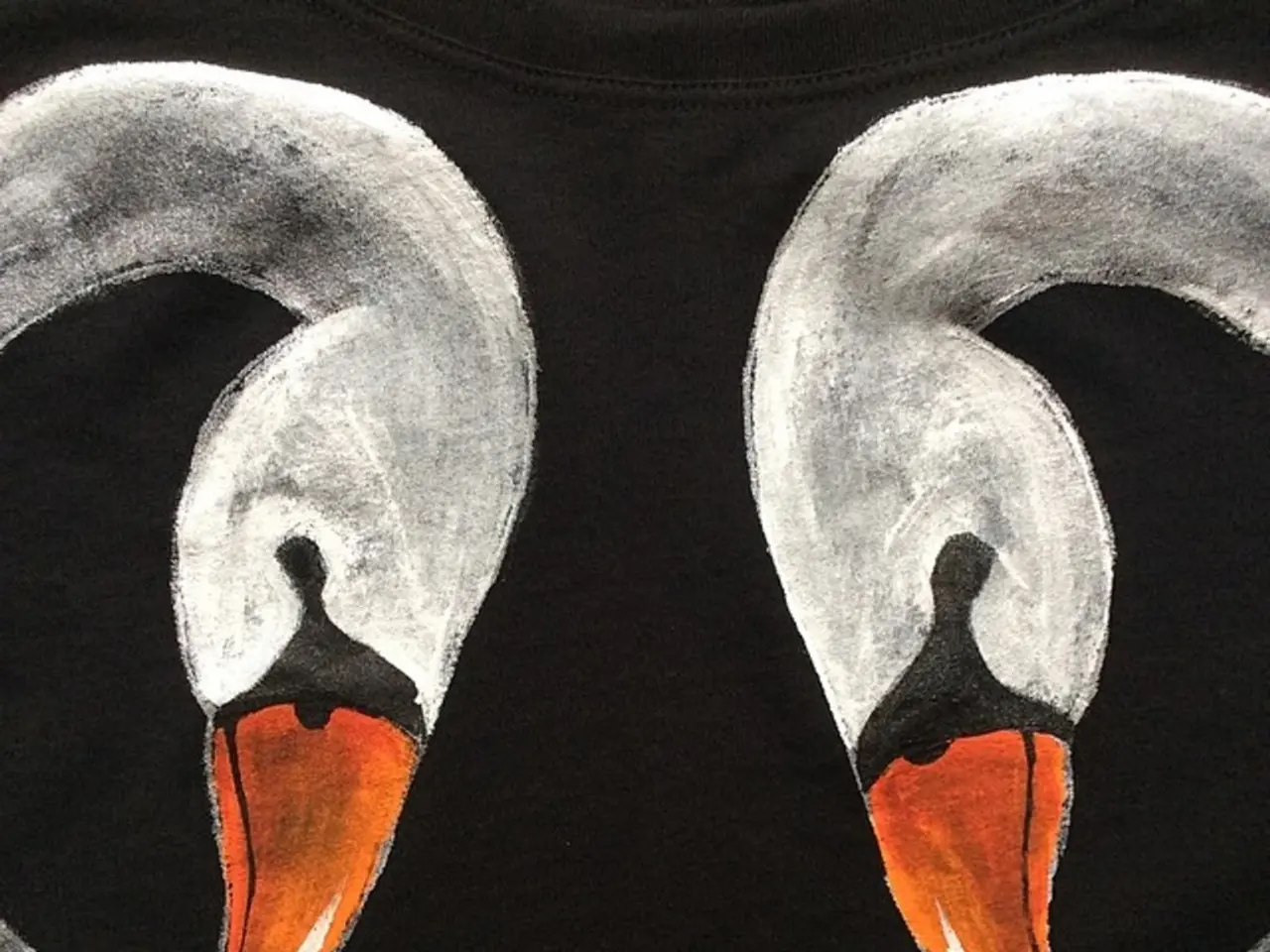Instructions for Applying Acrylic Paint on Cloth Materials
Acrylic paint on fabric can transform ordinary items into vibrant works of art. Whether you're a beginner or an experienced artist, this guide will help you effectively use acrylic paint on fabric to create long-lasting, washable designs.
Materials Needed
- Acrylic paint (preferably artist-grade or fabric-specific brands)
- Fabric medium (such as GAC 900 or commercial fabric medium)
- Paint brushes, sponges, or stamps depending on design
- Fabric (cotton, polyester, blends; preparation differs slightly)
- Heat source (iron or heat press) for setting paint
Fabric Preparation
- Wash fabric first to remove sizing or finishes that may prevent paint adhesion.
- Iron fabric smooth to remove wrinkles.
- Use a flat, sturdy surface underneath fabric to avoid bleed-through.
Mixing Acrylic Paint with Fabric Medium
- Mix equal parts acrylic paint and fabric medium like GAC 900 to improve flexibility, adhesion, and durability on fabric without cracking or stiffening.
- Fabric medium thins the paint and binds it better to fibers, crucial especially for stretch fabrics.
Painting Techniques
- Use brushes for fine details or sponges/stamps for texture and broad coverage.
- Techniques like dry brushing, layering, or wet-on-wet (alla prima) can be adapted, but fabric needs paint that remains flexible when dry.
- For airbrush application, acrylic paints require thinning; however, thinning ratios vary depending on paint brand.
- Allow each painted layer to dry before applying the next for clean edges.
Heat Setting
- After painting and drying completely (24 hours is ideal), heat set the fabric with an iron (typically 3-5 minutes on the reverse side) or heat press to bond paint permanently and improve washability.
- Follow fabric medium or paint instructions for specific temperature/time settings.
Tips for Different Fabrics
- Natural fibers (cotton, linen) absorb paint well and require less prep.
- Synthetic fabrics (polyester, nylon) may need special fabric mediums and careful washing to maintain design integrity.
- Stretch fabrics benefit from flexible fabric medium mixtures to avoid cracking.
Using these methods, acrylic-painted fabric projects such as clothing, bags, home décor, or accessories can have vibrant, long-lasting designs that resist cracking and washing out.
Summary Table
| Step | Recommendation | |----------------------|----------------------------------------------------| | Fabric prep | Wash & iron fabric before painting | | Paint mixture | Mix acrylic paint 1:1 with fabric medium (e.g., GAC 900) | | Painting methods | Brush, sponge, stamp; layer and dry between coats | | Drying | Fully dry 24 hours before heat setting | | Heat setting | Iron reverse side 3-5 minutes or use heat press | | Fabric types | Natural fibers absorb better; synthetics need care |
This approach is effective for various projects and fabric types, ensuring durable, flexible, and washable fabric art.
- Wash tests reveal that fabric paint typically outlasts acrylics mixed with a medium, maintaining vibrancy and staying true to form without peeling or cracking.
- Fabric paint is formulated specifically for use on textiles and offers better durability and flexibility out of the bottle compared to acrylic paint mixed with a fabric medium.
- Acrylic paint with fabric medium works well on heavier fabrics like denim but may show less resilience on lighter materials.
- When mixing acrylic paint with fabric medium, use a palette for mixing one part of fabric medium with one part of acrylic paint.
- For fabric painting, look for paint labeled for fabric or combine regular acrylics with a fabric medium.
- Always conduct a small patch test to check paint compatibility before applying to the main project.
- For projects involving fabric, fabric paint is the recommended choice for long-lasting, durable, and flexible finishes.
- After heat setting, wait for 24 hours before washing the fabric. Wash the fabric inside out on a gentle cycle with cool water.
- Soft-bristled brushes are ideal for fabric painting, as they allow for a smooth and even application.
- Acrylic paint can be used effectively on fabric with the right techniques and materials.
- Fabric paint adheres well to most textiles, retaining its color and texture even after multiple washes, making it ideal for lighter fabrics that might show paint bleed-through.
- The dryer method involves placing the fabric on a high heat setting for about an hour.
- Using fabric medium with acrylic paint offers several advantages, including creating a more flexible finish and improving the bond between the paint and fabric.
- Applying acrylic paint on fabric with the help of creative projects such as clothing, bags, home decor, or accessories can result in vibrant, long-lasting designs, resistant to cracking and washing out.
- To create durable, flexible, and washable fabric art, using fabric paint labeled for textiles or combining regular acrylics with a fabric medium is recommended, as it offers better adhesion and retains color after multiple washes, especially on lighter fabrics.




